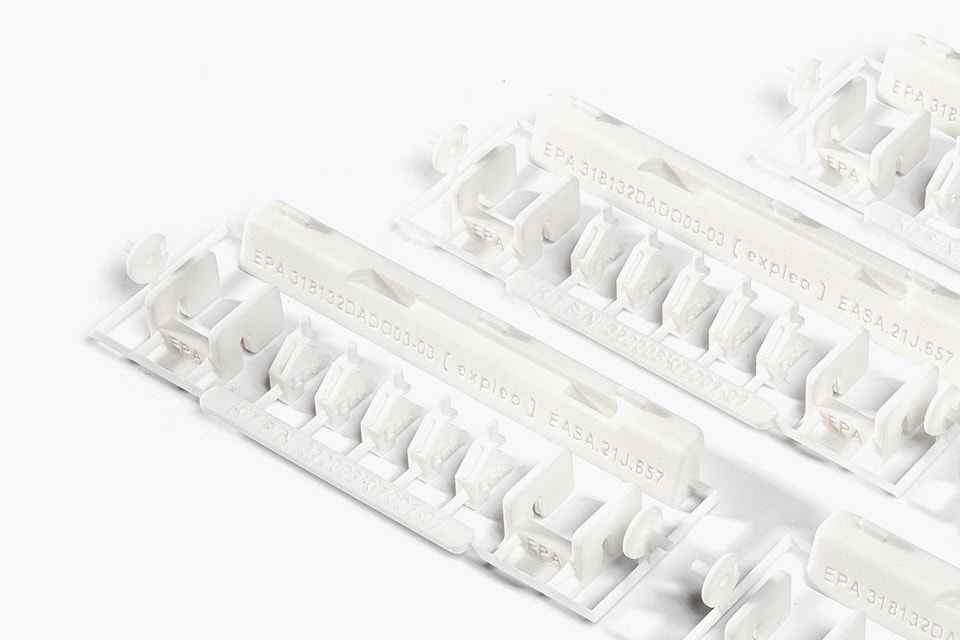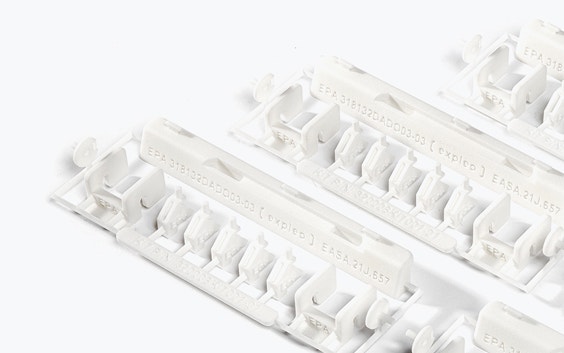Material
PA 2241 FR
PA 2241 FR is a polyamide powder that contains a chemical flame retardant. This high-performance material is ideal for manufacturing flame-resistant parts with high mechanical properties. It is CS/FAR 25.853 compliant, making it suitable for aeronautics and aerospace applications, and is also available in an Airbus certified grade, in accordance with AIPI 03-07-022.
Technical specifications
| Maximum part dimensions | 630 x 330 x 550 mm |
| Standard accuracy | ±0.3% (with a lower limit of ±0.3 mm) |
| Layer thickness | 0.10 mm |
| Minimum wall thickness | 1 mm |
| Minimum detail size | 0.8 mm, however please note the influence on flame retardancy |
| Interlocking or moving parts | Yes |
| Internal channels | Yes |
| Surface structure | Grainy structure |
Datasheet
| PARAMETER | VALUE | UNIT | METHOD |
| - | 1.00 | g/cm³ | |
| DIN EN ISO 527 | 49 | MPa | |
| DIN EN ISO 527 | 1,900 | MPa | |
| DIN EN ISO 527 | 15 | % | |
| DIN EN ISO 6508-1 | 89 | HRB | |
| ASTM D648 (@1.82 MPA) | 84 | °C | |
| JAR/FAR/CS 25.853 | 1 | mm |
Actual values may vary with build conditions and in relation to the part’s geometry and orientation.
Please get in touch with our team for more information and guidance.
Finishing degrees
The right finish can transform your print into a product. Explore the post-production finishes we offer for this material. If you have any questions or special requests, get in touch with us.
Train and learn
Get more from your next project with helpful resources dedicated to PA 2241 FR and selective laser sintering.

